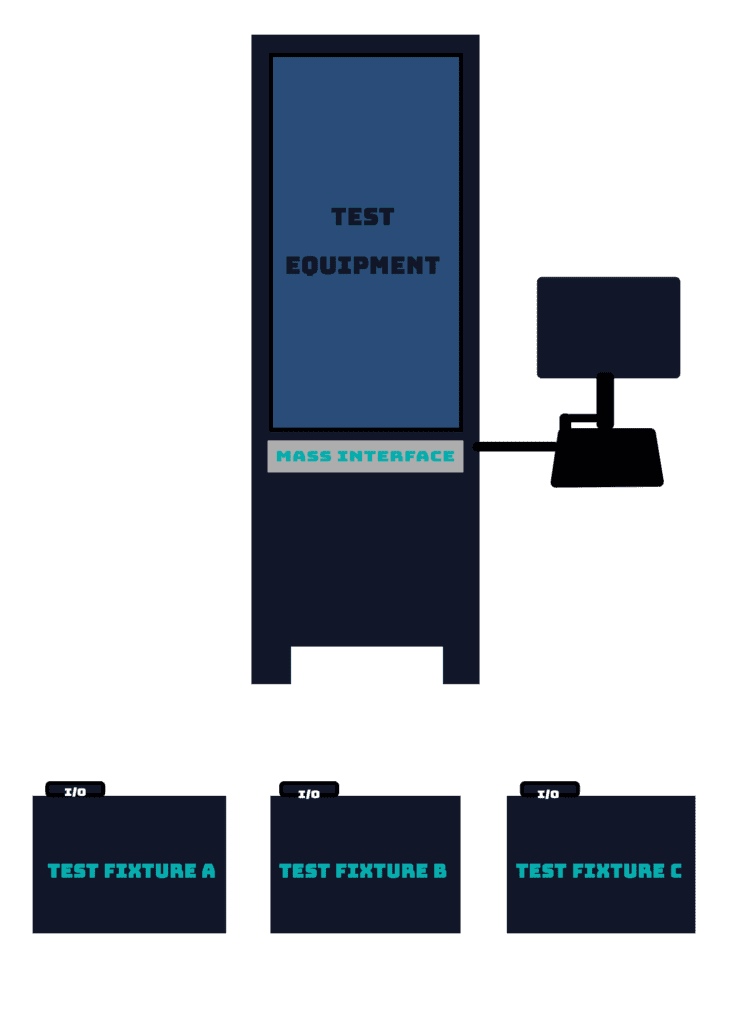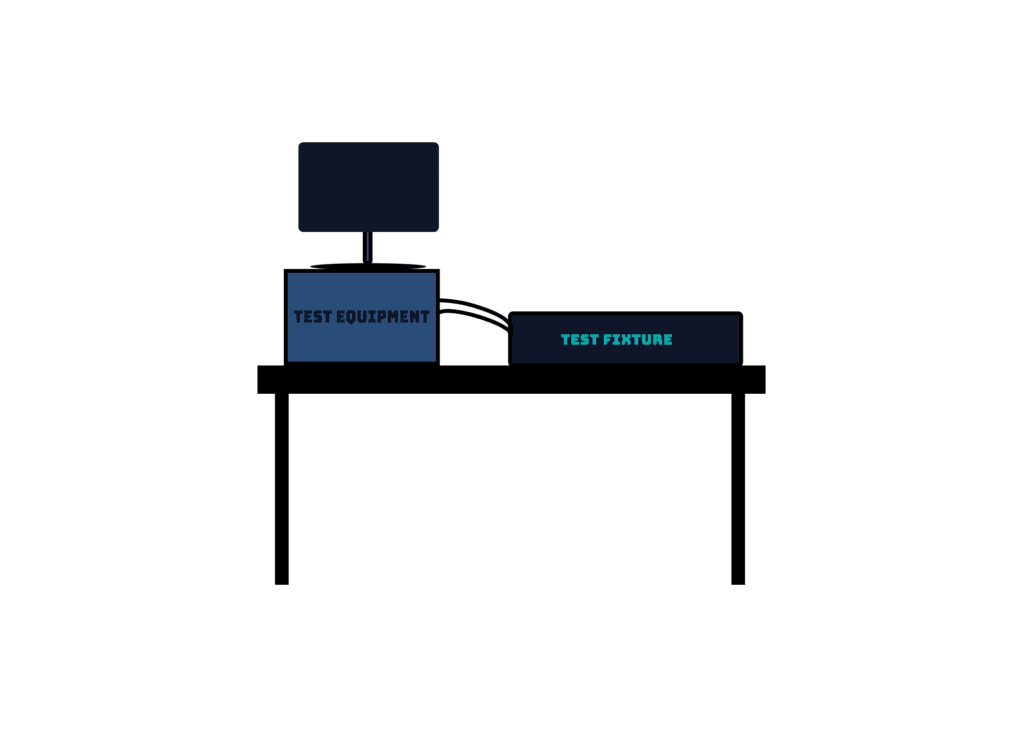Functional Test Station Architecture
Functional Test Station Architecture
Test teams have options when selecting a system architecture for their functional test stations. Here are a few to consider when developing a test strategy for your product lines. The best solution is often a mix of these options to meet a variety of test needs, production volumes and product maturity stages.
Universal Test Stations
-Universal test stations are designed to test a wide range of devices under test (DUTs). They provide a hardware and software platform that forms the common core needed to test your products.
-A universal test station typically consists of a test rack with a computer, instruments and a mass interconnect system to interface with fixtures. For each new DUT you want to test, add a fixture and a test software application to interface the DUT to the test resources in the test station.
-Leverage the common hardware and software platform of a universal test station to reduce costs. Re-use fixture and software templates to reduce development cost.
-A universal test station is a great way to test a product line with a high mix of low to medium volume DUTs. The high mix of DUTs ensures that the test station is fully utilized rather than sitting idle between production builds.

Standalone Test Stations Dedicated to a Single DUT
-Another option is to build standalone test stations, each designed to test a single DUT. This can be an excellent option for a high volume DUT for a product line with a long life ahead of it.
-Lower cost by including only exactly what is needed to test the DUT.
-As much as practical, utilize common hardware and software starting points to keep test stations as consistent as possible and to reduce development cost.
-Plan for future scalability and changes.

Hybrid between first two options
-This can be a test station that tests a range of similar DUTS with very similar test instruments.
-The test station can be a partially-populated universal test station that omits instruments not required by a category of DUTs. For example, some DUTs may not require RF instruments because they do not have wireless communication features. Cost can be reduced by not including specific instruments where they will not be utilized.
-Lower the cost of test by leveraging the common hardware and software platform of a universal test station and by omitting test resources not used by a category of DUTs.
Stay tuned for future posts about how to choose the best test strategy for test stations to test your DUTs. In the meantime, contact us if you would like to discuss your specific test requirements and how SSP can help.
